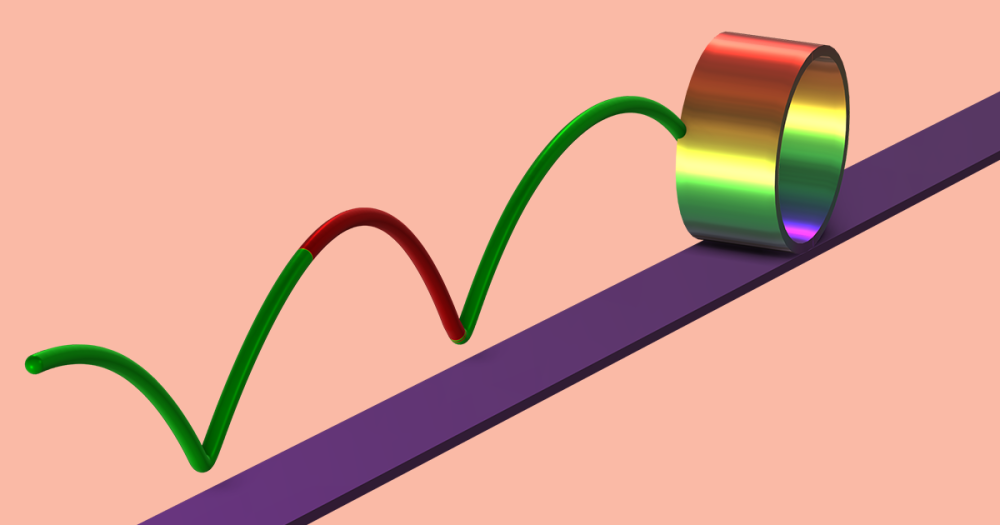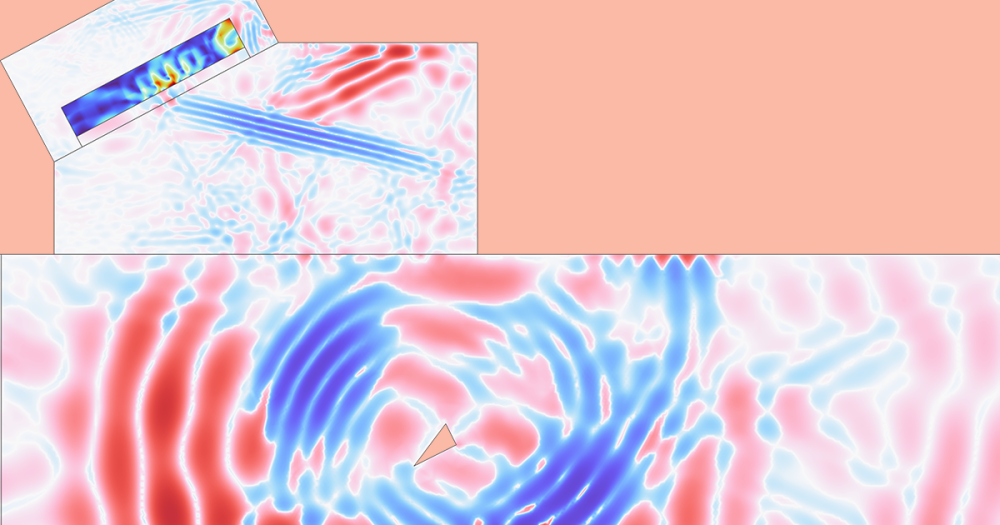
When given the choice, we’d all prefer our loudspeakers to project perfect sound; having a phone conversation with someone who sounds like a robot caught in a windstorm is less than ideal. The quality of the sound is, naturally, dependent on how well the speaker is designed, and COMSOL Multiphysics is the perfect tool to simulate and optimize loudspeaker designs because of its easy-to-use multiphysics nature. For a loudspeaker analysis to be accurate, you must be able to simulate from signal to sound with all the linking steps in between that determine how what you want to hear is transferred into what you actually will hear from a particular loudspeaker. Each step in the process will be interrelated, so it’s important to use this integrated multiphysics approach to capture each of these complex relationships. In the video at the bottom of this blog post, I will show you how our software can be used to perform a loudspeaker analysis.
How Loudspeakers Work
First, the audio content to be played enters the loudspeaker as an oscillating voltage difference applied to the voice coil, which creates a corresponding oscillating (alternating) current to flow through the coil based on Ohm’s Law. This current flow creates a magnetic field around the wire, according to Ampere’s Law, which changes orientation with the change in current direction.
The permanent magnet surrounding the voice coil creates a surrounding magnetic field that has a permanent orientation. As the magnetic field from the electromagnet flips its polarization direction, the positive pole of one magnet attracts the negative pole of the other, the positive pole of one magnet repels the negative pole of the other, and vice versa. This creates a force on the voice coil that causes it to move up and down, again based on the original input signal, and therefore to push the cone itself up and down accordingly.
As the cone moves, it is constrained by the spider, which provides damping for the cone and connects it to the surrounding baffle, and it “pushes” and “pulls” the air directly in front of it. This creates a miniscule fluctuation of air pressure from standard absolute pressure, which propagates outward from the cone to the listener.
The size and shape of the loudspeaker will determine how loud the resulting sound will be for any given frequency of oscillation and at any given point in space. These results, along with many other electrical, structural, and acoustic parameters of the loudspeaker, can be calculated during postprocessing in COMSOL Multiphysics.
Video of a Loudspeaker Analysis
In the following video I demonstrate how you can use COMSOL Multiphysics together with the Acoustics Module and AC/DC Module to simulate the electromagnetics, structural mechanics, and acoustics aspects of a loudspeaker design.
Further Reading
- Check out our loudspeaker driver model for more information. If you log into your COMSOL Access account you can download the documentation for this model as well.
- Learn more about how loudspeakers work.






Comments (0)